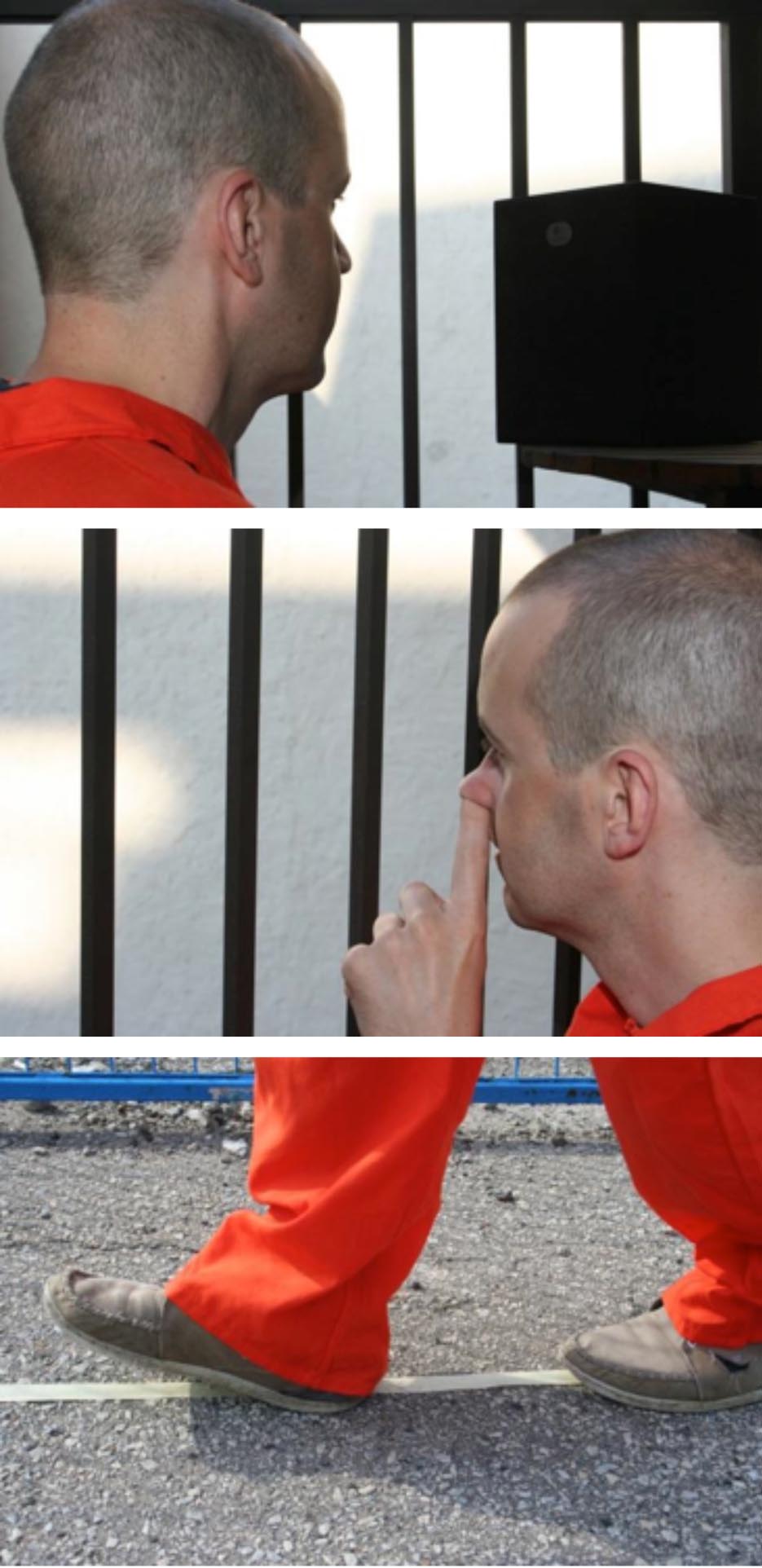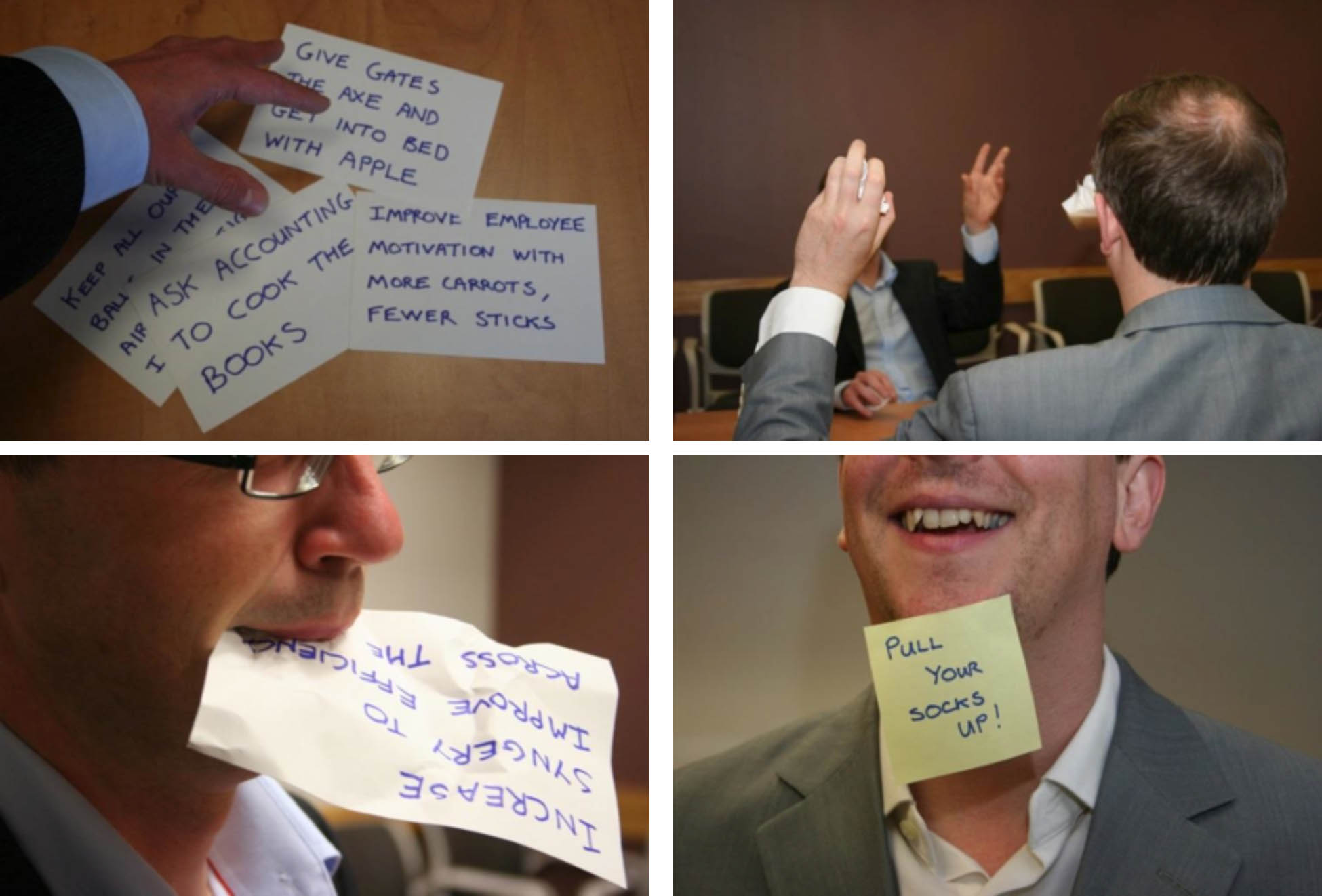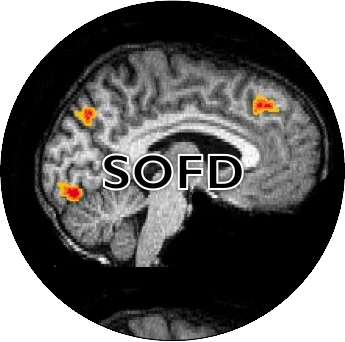
Tweet
October 15, 2015
Proceedings of the Natural Institute of Science | Volume 2 | SOFD 7
The proof of the pudding: A series of applied tests of the implications of research on embodiment
Lois Sanborn1 and Steve Bennett1
1 - Institute for Generating Novel Outcomes Based on Embodied Language, University of Springfield

Introduction
Calls have been made for psychologists to step up to the plate and deliver on the promise of their theories with practical products (e.g., Banyard 2015). In the present article we report on the work of a recently-established translational research institute designed to generate just such practical outcomes: the Institute for Generating Novel Outcomes Based on Embodied Language (IGNOBEL). The impetus for IGNOBEL comes from a recent offshoot of work on embodied cognition that demonstrates that enacting idioms can produce their figurative associations (e.g., literally smelling something fishy increases levels of suspicion; Lee & Schwarz 2012). The aim of the institute is to take this insight out of the lab and prove its value in everyday settings, and here we outline a number of ways that we believe this can be achieved. But first, we present a brief theoretical background for those unfamiliar with work on the embodiment of metaphor.
Embodiment in Language: Not all Metaphors are Merely Metaphorical
Embodied cognition refers to the idea that our thinking is shaped by our corporeal nature (Glenberg et al. 2013). Many thus believe that our understanding of even high-level, abstract concepts is grounded in our more concrete bodily experiences (Meier et al. 2012), and that commonly-used metaphors accurately represent these abstract-concrete connections. For example, we often describe an emotionally close relationship as warm and an emotionally distant one as cold. And, in fact, research has shown that social exclusion leads people to estimate their surroundings as a couple of degrees colder (Zhong & Leonardelli 2008) and even causes actual drops in body temperature (IJzerman et al. 2012). This relationship also seems to work in reverse. Experiences of literal coldness make us feel lonely (Bargh & Shalev 2012), while experiences of literal warmth can eliminate these negative feelings (Bargh & Shalev 2012; IJzerman et al. 2012), make us feel closer to other people (IJzerman & Semin 2009), and even cause us to behave more friendly (i.e. warmer) toward them (IJzermnan et al. 2013; Williams & Bargh 2008). This connection between physical and social warmth may have its origin in our own personal developmental histories (Williams & Bargh 2008) or our species’ evolutionary one (IJzerman et al. 2012). In social species such as ours, close early bonds between infant and caregiver involve much physical contact and thus transfer of body heat, which may help promote shared neural responses to physical and social warmth (Inagaki & Eisenberger 2013)[1].
The most recent studies in this line of research have gone further, demonstrating the literal truth in even the most complex idiomatic metaphors where the connections between the abstract and concrete concepts involved are “less strong, less intuitive and less stable” (Hellmann et al. 2013). Leung et al. (2012) found that participants who were asked to think creatively while literally sitting inside a box were less creative than those who sat, and thus who thought, outside the box. Furthermore, participants who literally put two and two together by re-joining coaster halves were subsequently more successful problem-solvers. Dong et al. (2013) found that when people are embarrassed they show a preference for facial cream that helps them to literally restore or save face.
What is most encouraging about these most recent embodied effects is that they demonstrate that there actually need not be an obvious connection between the abstract and concrete concepts involved in the metaphor for its literal enactment to work. It seems unlikely, for instance, that there is any strong association, either in our individual developmental histories or in our species’ evolutionary one, between experiences of creativity and being outside of boxes[2].
Thus inspired, we at IGNOBEL scoured the dictionary for useful idioms whose literal embodiment might allow us to influence all kinds of high-level thoughts and behaviors. After pilot testing several hundred idioms[3] we took these ideas and ran with them[4], developing a number of practical applications which we anticipate will achieve unbelievable results in a number of fields, as follows.
Applications to Correctional Psychology
Obvious opportunities for low-cost interventions in penal institutions arise from work demonstrating that literal experiences of brightness and fresh scents inhibit unethical (i.e. metaphorically shady or dirty) behavior and promote pro-social behavior (Liljenquist et al. 2010; Zhong et al. 2010). However in our partner institutions we have innovated far beyond simply installing Halogen light-bulbs and daily spritzing of cells with citrus-scented Windex. Working with a small number of progressive penal institutions, we have creatively applied embodied cognition to design some remarkably simple methods of reducing offender recidivism.
We begin by making inmates literally face the music for their wrongdoing (Figure 1, top), which helps them accept the necessity of their incarceration and begin the process of rehabilitation. Following this, a rigorous routine of personal cleansing begins, helping inmates to wash away their sins (see Zhong & Liljenquist 2006). One particularly beneficial aspect of this regimen is a practice of scrupulous rhinotillexis (Figure 1, middle) to encourage inmates to keep their noses clean. It is important that such cleanliness be achieved with lukewarm water at most, since encouraging inmates to get into hot water is precisely the metaphorical outcome we are attempting to avoid.

A further innovation, designed to help inmates practice respect for rules and conformity to moral codes of conduct, involves using sticky-tape to create a 1cm-wide line down the middle of the prison exercise yard. Inmates are encouraged to walk the entire length of the line on a daily basis (Figure 1, bottom), which helps inmates learn to walk the straight and narrow. Note that it is vital to the success of this practice that no inmate be allowed to step out of line, nor to cross the line at any point, as these behaviors embody quite the opposite concepts to those we seek to reinforce.
All of these procedures are simple, inexpensive, and effective, requiring no more than extra lights, Windex, soap-and-water, and a piece of tape. By combining them, we anticipate that prisons will achieve unprecedented reductions in recidivism.
Applications to Counseling Psychology
In our work in counseling psychology we have built upon existing findings that demonstrate a role for embodied idioms in marital satisfaction, such as Huang et al. (2012) who showed that couples who commute in the same direction (rather than going their separate ways) are more satisfied with each other.
To begin with, we provision our therapeutic settings with air purifiers and peace lilies (Spathiphyllum; a plant renowned for its ability to remove airborne toxins[5] – Wolverton & Wolverton 1993) to aid couples in clearing the air between them. We also equip couples with spectacles designed to absorb all wavelenghts of light between 600 and 750 nm to ensure that they can no longer see red when talking to one another (Fetterman et al. 2012). During sessions, couples feed each other candy to encourage them to be sweeter to each other (Meier et al. 2011) and to counteract any pre-existing bitterness. They then engage in a series of simple activities (see Figure 2) that are the literal embodiment of the work couples must do in counseling to repair their relationships. Once done with these activities, the couples turn their backs on the objects involved, practicing putting things behind them (see Li et al. 2010 for a similar embodied method of achieving closure).

Again, the embodiment of these idioms is a relatively trivial matter, yet will (we assume) drastically improve the effectiveness of couples’ therapy sessions.
Industrial and Occupational Psychology
The removal of the traditional office cubicle walls has long been a hallmark of the most creative companies, no doubt because it means all employees are effectively thinking outside the box (or the cube). Beyond this obvious application of embodied metaphor, we have found that enacting other idioms also helps in a myriad of occupational contexts. Office chairs in our partner companies are custom-built to remove the seat cushion, leaving only the frame. This ensures that employees must constantly sit on the edge of their seats, generating a sense of excitement about their jobs. Accountants benefit from old-fashioned deportment lessons in which they are made to literally balance the books. Negotiators become markedly more effective once, with the application of some basic food coloring, they become silver tongued. After an early setback[6], we discovered a simple strategy for markedly improving the performance of underachieving employees, no matter what their role in the company: requiring them to pull their socks up.
In addition, we have developed a comprehensive package of activities which profoundly improves the generation of creative ideas among executives. To begin, executives form a sports-team-style huddle, literally putting their heads together. They then follow the steps outlined in Figure 3, all aimed at aiding the creation and follow-through with new ideas.

We have also found practices embodying metaphors to be helpful in the sometimes fraught realm of employee evaluations. When preparing to receive negative feedback, we find it helps to have employees apply face-cream with a collagen-strengthening peptide formulation, in order to develop both a literal, and thus metaphorical, thick skin. When receiving feedback, we also ensure that employees take it on the chin (see Figure 3, bottom right).
Our partner organizations are now posed to reap the manifold benefits of these revolutionary embodied practices.
Conclusions
We understand that, to the reader unfamiliar with research on the embodiment of metaphor and idiom, our suggestions for the practical application of these ideas may seem unusual, perhaps even outlandish. In these times of increasing scrutiny regarding the quotidian research practices (aka QRPs; John et al. 2012) of psychologists, we understand that the present overview of our work may raise a few eyebrows. At the Institute, we ourselves encourage a healthy dose of skepticism in interpreting published reports of research. In fact, embodied language practices can also help us in this regard. We find that, when reading psychology papers, the simultaneous administration of approximately 5mg of sodium chloride markedly improves our critical thinking skills.
Nevertheless, to the skeptics who believe our ideas to be half-baked, we say that the proof of the pudding is in the eating! We suggest that psychological theories in general should live or die by their practical utility in everyday settings. Here we have outlined several ways in which we are embodying idioms in real world contexts for practical benefits and anticipate that the projects outlined here will shortly prove their worth. There are surely other idioms and metaphors with practical applications to be explored as well (see the speculation in Ackerman et al. 2010, and see Li & Liao 2013 and Zarkadi & Schnall 2013 for examples). We encourage our fellow psychologists, whatever their theoretical orientation, to follow in our footsteps. If the proof of the pudding is in the eating, it would be beneficial to our psychological science if we more often attempt to eat the puddings that our theories prescribe.
Ultimately, this is the bottom line.
References
Ackerman, J.M., Nocera, C.C. & Bargh, J.A. (2010). Incidental haptic sensations influence social judgments and decisions. Science, 328, 1712-1715.
Bargh, J.A. & Shalev, I. (2012). The substitutability of physical and social warmth in daily life. Emotion, 12, 154-162.
Banyard, P. (2015). Where is psychology’s non-stick frying pain? [Web log post]. Retrieved from https://thepsychologist.bps.org.uk/where-psychologys-non-stick-frying-pan?
Dong, P., Huang, X. & Wyer, R.S. (2013). The illusion of saving face: How people symbolically cope with embarrassment. Psychological Science. Advance online publication. doi:10.1177/0956797613482946
Fetterman, A.K., Robinson, M.D. & Meier, B.P. (2012) Anger as “seeing red”: Evidence for a perceptual association. Cognition and Emotion, 26, 1445-1458.
Glenberg, A.M., Witt, J.K. & Metcalfe, J. (2013). From the revolution to embodiment: 25 years of cognitive psychology. Perspectives on Psychological Science, 8, 573-585.
Hellmann, J.H., Echterhoff, G. & Thoben, D.F. (2013). Metaphor in embodied cognition is more than just combining two related concepts: a comment on Wilson and Golonka (2013). Frontiers in Psychology, 4, 201.
Huang, X., Dong, P., Dai, X. & Wyer, R.S. (2012). Going my way? The benefits of travelling in the same direction. Journal of Experimental Social Psychology, 48, 978-981.
IJzerman, H., Gallucci, M., Pouw, W.T.J.L., Weißgerber, S. C., Van Doesum, N.J. & Williams, K.D. (2012). Cold-blooded loneliness: Social exclusion leads to lower skin temperatures. Acta Psychologica, 140, 283-288.
IJzerman, H., Karremans, J.C., Thomsen, L. & Schubert, T.W. (2013). Caring for sharing. How attachment styles modulate communal cues of physical warmth. Social Psychology, 44, 160-166.
IJzerman, H. & Semin, G.R. (2009). The thermometer of social relations. Psychological Science, 20, 1214-1220.
Inagaki, T.K. & Eisenberger, N.I. (2013). Shared neural mechanisms underlying social warmth and physical warmth. Psychological Science, 24, 2272-2280.
John, L.K., Loewenstein, G. & Prelec, D. (2012). Measuring the prevalence of questionable research practices with incentives for truth telling. Psychological Science, 23, 524-532.
Lee, S.W.S. & Schwarz, N. (2012). Bidirectionality, mediation, and moderation of metaphorical effects: The embodiment of social suspicion and fishy smells. Journal of Personality and Social Psychology, 103, 737-749.
Leung, A.K.-y., Kim, S., Polman, E., Ong, L.S., Qiu, L., Goncalo, J.A. & Sanchez-Burks, J. (2012). Embodied metaphors and creative “acts”. Psychological Science, 23, 502-509.
Li, H. & Liao, X. (2013). Loneliness, warmth-seeking behavior, and posttraumatic stress among survivors of the Sichuan earthquake. Social Behavior and Personality, 41, 1605-1612.
Li, X., Wei, L. & Soman, D. (2010). Sealing the emotions genie: The effects of physical enclosure on psychological closure. Psychological Science, 21, 1047-1050.
Liljenquist, K., Zhong, C-B. & Galinsky, A.D. (2010). The smell of virtue: Clean scents promote reciprocity and charity. Psychological Science, 21, 381-383.
Meier, B.P., Moeller, S.K., Riemer-Peltz, M. & Robinson, M.D. (2011). Sweet taste preferences and experiences predict prosocial inferences, personalities, and behaviors. Journal of Personality and Social Psychology, 102, 163-174.
Meier, B.P., Schnall, S., Schwarz, N. & Bargh, J.A. (2012). Embodiment in social psychology. Topics in Cognitive Science, 4, 705-716.
Williams, L.E. & Bargh, J.A. (2008). Experiencing physical warmth promotes interpersonal warmth. Science, 322, 606-607.
Wolverton, B.C. & Wolverton, J.D. (1993). Plants and soil microorganisms: Removal of formaldehyde, xylene, and ammonia from the indoor environment. Journal of the Mississippi Academy of Sciences, 38, 11-15.
Zarkadi, T. & Schnall, S. (2013). “Black and white” thinking: Visual contrast polarizes moral judgment. Journal of Experimental Social Psychology, 49, 355-359.
Zhong, C-B., Bohns, V.K. & Gino, F. (2010). Good lamps are the best police: Darkness increases dishonesty and self-interested behavior. Psychological Science, 21, 311-314.
Zhong, C-B. & Leonardelli, G.J. (2008). Cold and lonely. Does social exclusion literally feel cold? Psychological Science, 19, 838-842.
Zhong, C-B. & Liljenquist, K. (2006). Washing away your sins: Threatened morality and physical cleansing. Science, 313, 1451-1452.
Footnotes
[1] Given all this, we readily admit to some puzzlement over what we have come to refer to as the Canadian paradox. If literal warmth begets social warmth, why are Canadians so friendly? [Return to main text]
[2] Indeed, a quick Google image search using the phrase “cardboard box car” or “box fort” reveals that being inside a box can be an occasion for much creativity during childhood. [Return to main text]
[3] In all our successful pilot tests, p = .049, ns per cell varied from 19-56, covariates may or may not have been used, and results reflected a subset of participants, conditions, and/or DVs. Further details are not available upon request. [Return to main text]
[4] Sometimes literally. Several of us at IGNOBEL regularly carried copies of these embodied research reports with us whilst out jogging, which seemed to stimulate us to develop new applications from them. For some reason, we also found we were particularly likely to generate our novel applications of these findings while out to lunch. [Return to main text]
[5] The plants have thrived since, for just the price of a can of paint, our institute’s janitorial staff now all have green thumbs. [Return to main text]
[6] Contrary to our expectations, it turns out that employees do not perform particularly well when literally on fire. [Return to main text]
More Articles Below!

Proceedings of the Natural Institute of Science (PNIS) by https://instsci.org/ is licensed under a Creative Commons Attribution-ShareAlike 4.0 International License.


